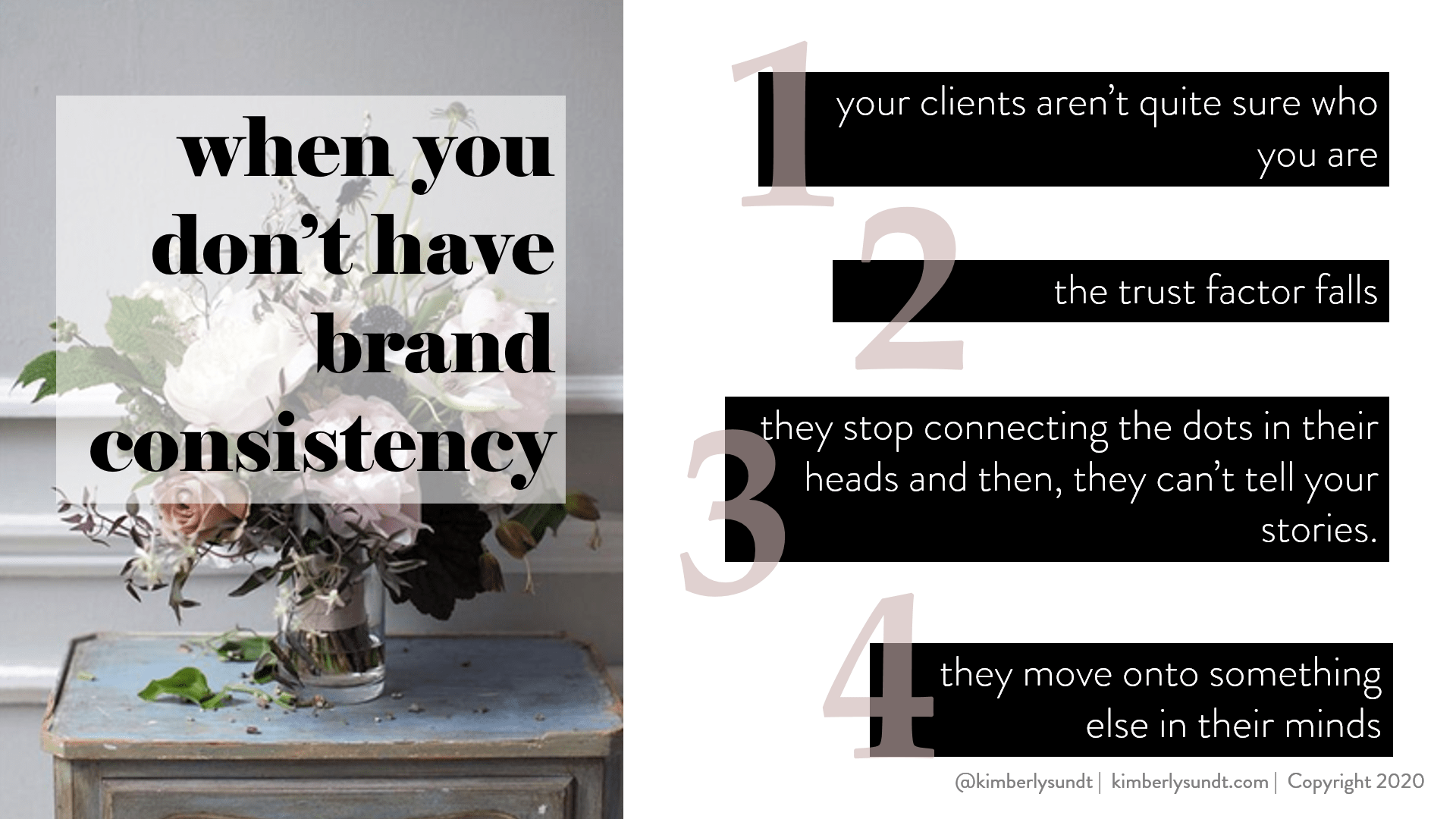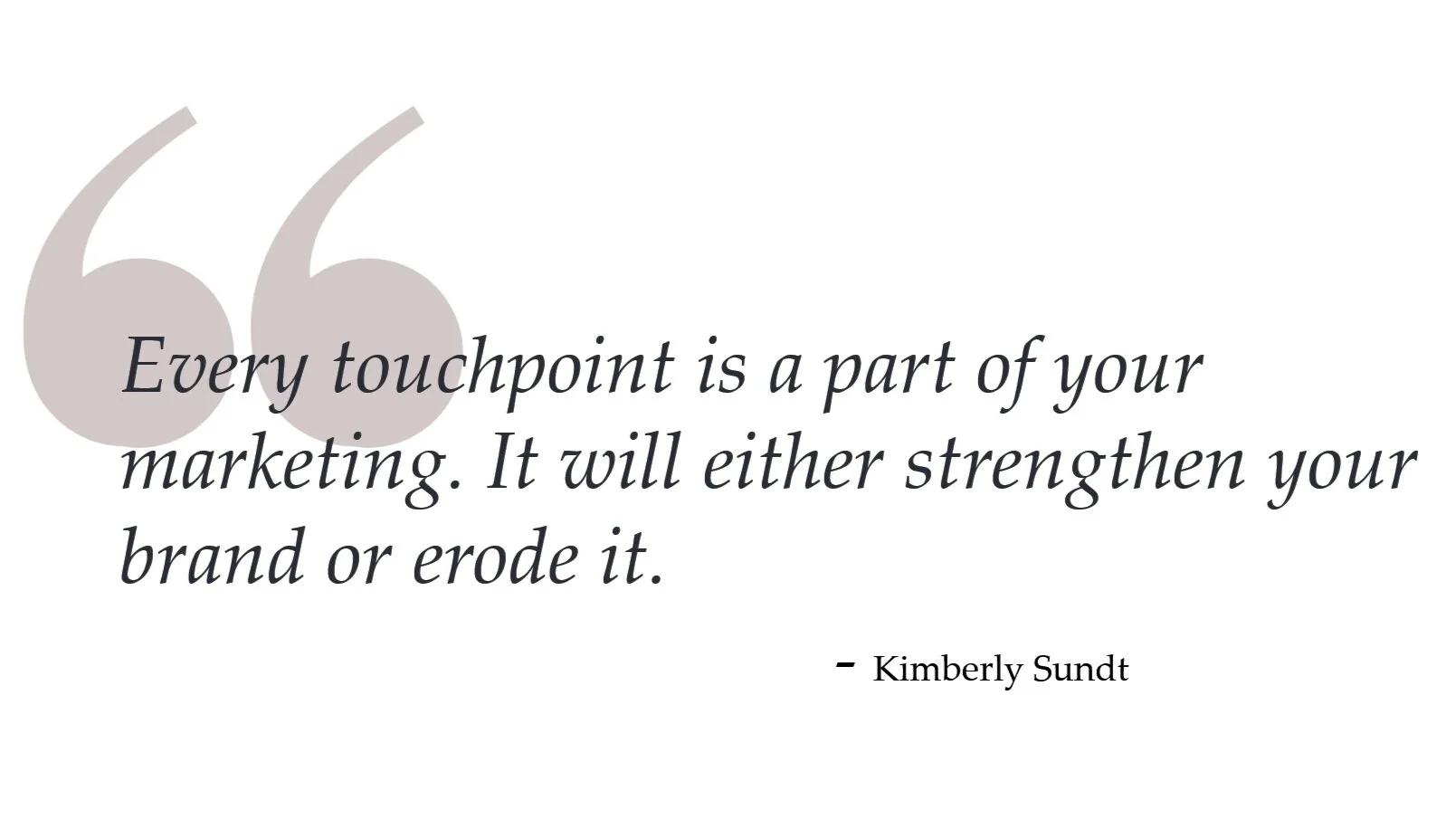Why Brand Consistency Matters (and what it means!)
One of the most important ways to build client trust and word-of-mouth marketing.
What’s up with all the talk about Brand Consistency? Well, that’s not what it’s about.
THE CONVERSATION IS ACTUALLY ABOUT TRUST.
Whether you realize it or not, you notice brand consistency every day. Have you been on any Zoom calls where the speaker, who represents a high-end, luxury brand, is in his messy, cluttered living room? (clean up those shelves and close the doors for heaven’s sake!) Lack of consistency.
Have you ever worked with someone who creates beautiful art, or beautiful spaces — someone who obviously believes in the Power of Pretty? But then, you get the invoice or the contract and not only does it look like it came from stockcontracts.com (made that up), but the fonts are off, there’s a grammatical error or two, and for sure . . . it is not pretty.
We are wired to trust consistency. When another person is drastically inconsistent, you wonder if they’re okay or if something is really wrong. If a child is doing something out of his norm, you wonder what is up. When someone doesn’t follow through on a promise, you are disappointed, and you lose trust.
Studies prove that brand consistency affects our brains in a similar way. Brand consistency is the glue that holds all of the other wonderful things you are doing together.
You are brilliant on a consult call.
You have a gorgeous website.
Your email newsletter is spot-on.
You make emotional connections left and right.
But if you don’t have brand consistency, these things are just out there on their own, without the strength and effectiveness of all working together.
Client trust is an essential part of business, now so more than ever. Especially since the pandemic, trust is more than just important. Clients will walk away the minute they can’t trust you. How do you develop this trust, especially now, when so many of our first interactions are digital?
For today, let’s talk mostly about digital trust - how you show up online. The in-person experience is just as important, but I think to actually accomplish something, we need to both narrow it down, and then break it down.
Need more definition around touchpoints? This post will help you.
You can put your brand values, promise, and identity in front of you and start to see where you have brand consistency and where you don’t. I’m going to back up for a second: if you haven’t already identified and shared with your team your brand values and promise, then doing that is the real step one, but let’s assume you’ve done that.
Then, you want to look at each touchpoint and evaluate it on brand consistency.
Does Brand Consistency refer to your logo and brand colors and typography? Of course. But let’s look at three primary parts-
VISUAL - just what it sounds like. Logos, colors, images, fonts, the general look.
VOICE - what you say and how you say it.
EXPERIENCE - how it feels.
And, Brand Consistency is just one of what I call the 4Cs of Branding. You can read about the others here.
So, what do you need to do? I’ve created a checklist that you can use to identify touchpoints (I’ve listed most of them), but here is the overview of the steps:
1 | CREATE BRAND GUIDELINES.
2 | IDENTIFY ALL TOUCHPOINTS.
3 | USE THE CHART PROVIDED TO CHECK YOUR CONSISTENCY THROUGH YOUR WEBSITE, SOCIAL, COLLATERAL, ETC.
4 | NOTICE ANY PATTERNS WHERE YOU NEED TO ADDRESS YOUR BRAND GUIDELINES.
5 | BRAINSTORM WAYS YOU CAN MAKE EACH TOUCHPOINT MORE ON-BRAND AND START.
START WITH ONE TOUCHPOINT.
JUST ONE.
Remember, when there’s a lack of consistency, your clients stop connecting the dots in their heads and then, they can’t tell your stories.
The trust factor falls.
Your clients aren’t quite sure exactly who you are.
They move onto something else in their minds.



